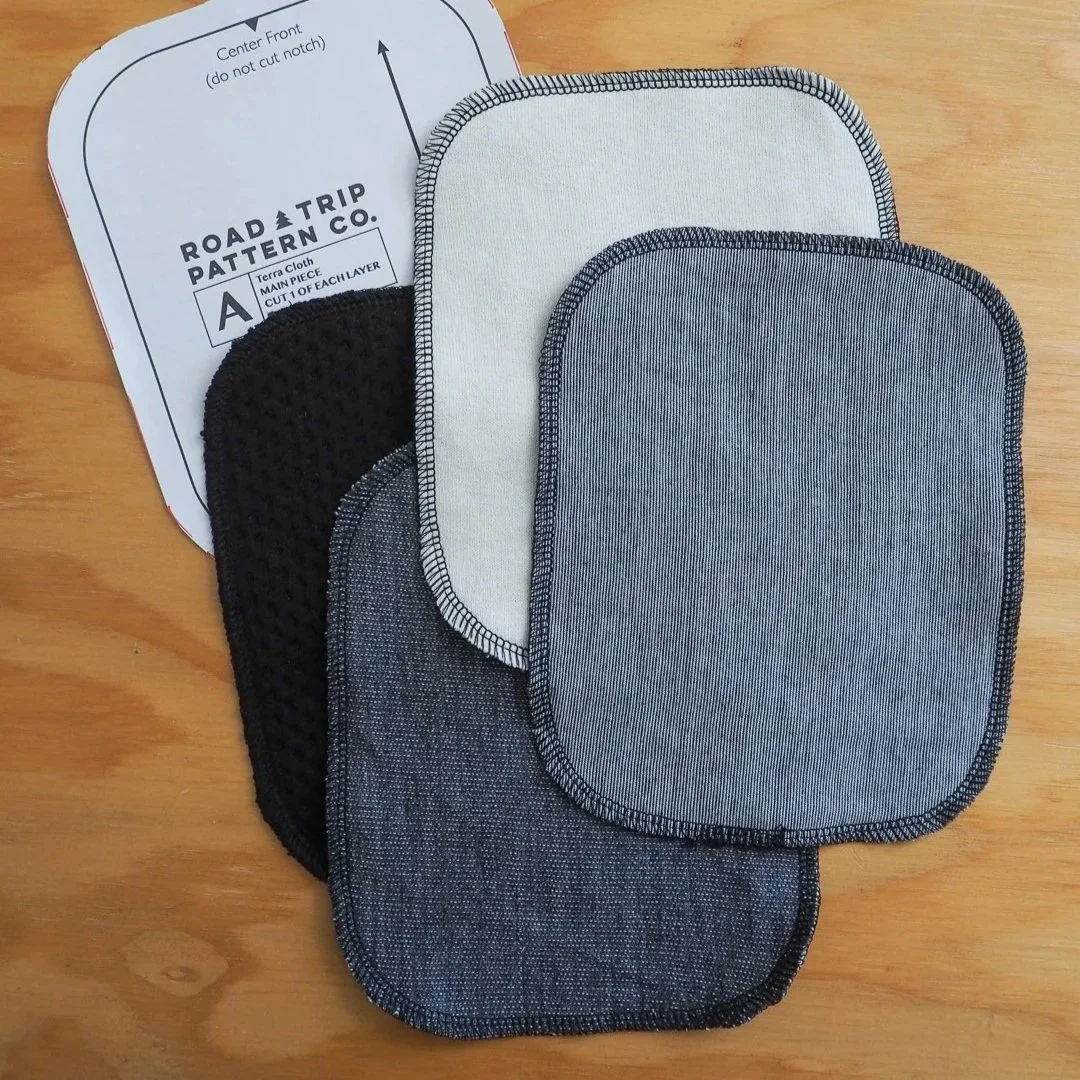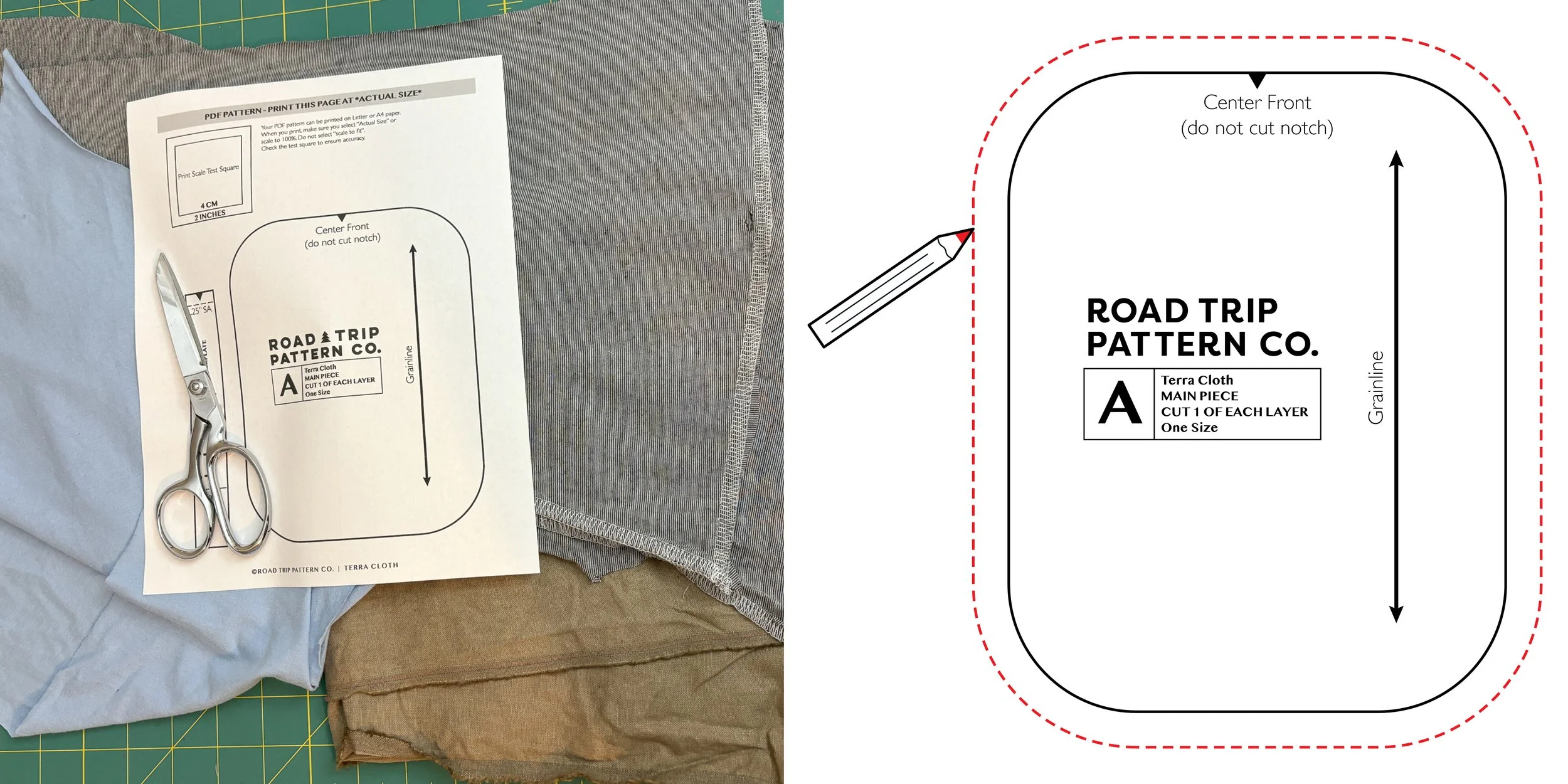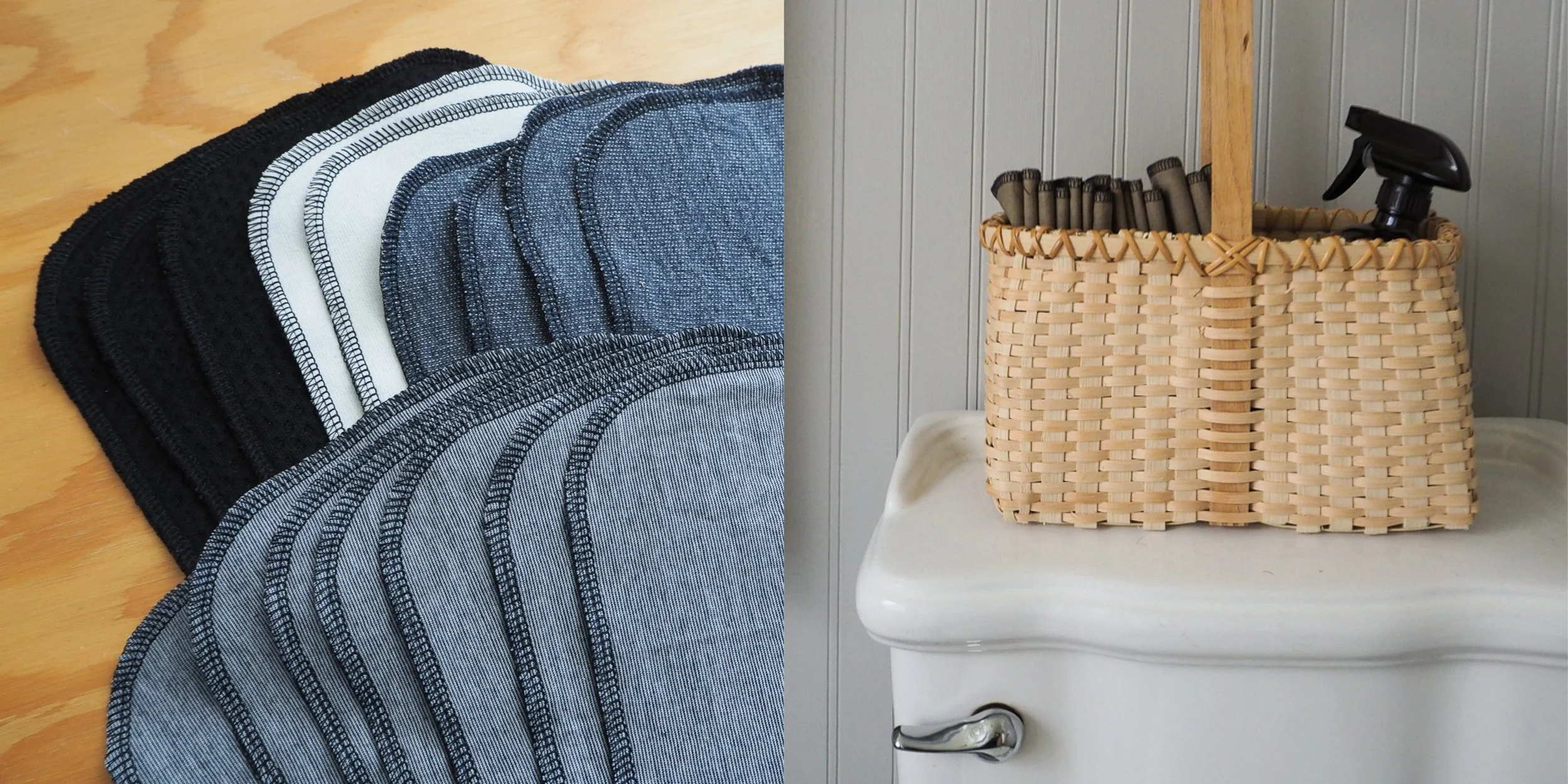How to Sew Reusable Wipes
A DIY sewing tutorial on how to make your own sustainable switch to washable toilet paper wipes (aka family cloths).
An easy zero waste switch
Looking to reduce waste and save money on household essentials?! Making your own reusable toilet paper wipes is a practical and affordable way to create a more eco-friendly household while using up scrap fabric at the same time!
BONUS: these toilet paper wipes also double as reusable wet wipes for quick surface cleaning.
What are Family Cloths and Why Use Them?
Washable toilet paper or family cloths are reusable fabric squares that replace disposable toilet paper for liquid waste. They're easy-to-use, washable, and much softer and more comfortable on your skin! Many families use them alongside regular toilet paper, gradually reducing their TP consumption over time.
Not only does it help reduce pollution from paper production; it saves trees, water, AND money!
Materials for ~30 cloths:
1 yard cotton flannel at 44” wide: $10
Thread: $3
Total: $13
Compare to $50-100 annual toilet paper costs for significant long-term savings.
Different Uses for Reusable Wipes:
Reusable Toilet Paper
Baby Wipes
Household Cleaning Wipes
Dusting Wipes
How many do I need to make?
Consider a few key factors before determining how many to make. We recommend starting with 10-15 to get a feel for how often you will use and wash them.
Household size: How many cloths will you need in rotation for you or your family? Calculate 10 clothes per person.
Washing frequency: Can you wash every 2-3 days or need a week's supply?
Comfort level: Starting with one family member or jumping in completely?
Storage space: Where will you keep clean and used cloths?
Fabric Options:
See below suggested fabrics that remain soft, absorbent, and are durable enough for frequent washing.
Cotton Flannel: A steadfast choice for softness and absorbency. Choose quilting-weight flannel for the perfect balance of thickness and durability.
Zorb®: This is a super absorbent textured knit fabric that soaks up liquids 20 times faster than other materials. Available in Cotton, Organic Cotton, and Bamboo blends.
Upcycled Bath Towels: Maximum absorbency for heavy duty use. French Terry is a slightly thinner option if terry cloth is too thick for your machine.
Upcycled T-Shirts: This option is essentially free if you have old cotton shirts lying around!
Bamboo, Modal, or Tencel Fabrics: Naturally anti-microbial and super soft. Choose a stable knit fabric if using these fibers.
Merino Wool Fabrics: If you have scrap merino wool knits around this is a great way to use them since wool is naturally odor resistant! Make sure your fabric is machine washable and can handle warm washing temps to avoid felting.
BONUS TIP: If you don’t like the color of your fabric you can always dye it to make them uniform or cover up stains!
Image Sources: Etsy, Wazoodle
Sewing Instructions
Supplies and Notions
Printed Pattern Template (Download the Terra Cloth)
Fabric of choice (yardage determined by quantity needed and 1-2 layers)
Rotary cutter or fabric scissors
Sewing machine or Serger
Thread
Pins or clips
Step 1: Determine Quantity and 1 or 2 Layers
Once you have your quantity determined (10 per person), decide if your fabric needs to be single or double layer. Thinner, lightweight flannels will work fine, but you may find you want a thicker handfeel for more durability over time. You may consider choosing different color fabrics or thread colors to organize cloths for each person.
If you are using any knit fabrics, we suggest you double layer with a woven on the back side since the knit will be stretchy and helps to have something to stabilize it.
Our version was made with a cotton/linen woven back and a knit front (Zorb, merino/cotton jersey, bamboo jersey, cotton french terry).
Make sure to pre-wash your fabric to prevent shrinkage!
Step 2: Prepare Template and Cut Fabric
Print the Terra Cloth pattern at 100% scale. Draw a 3/8” (1 cm) seam allowance around MAIN PIECE (A) and cut out your template. Final size: 6 x 7.5” (15 x 19 cm)
Lay out your fabric flat, trace and cut the template as many times as needed. We recommend a rotary cutter for fast and easy cutting.
Step 3: Finish the Edges
If your cloths are double layered, pin or clip together ensuring the right side of the fabrics are facing out (typically you want the absorbent, fuzzy side as the right side).
To finish the edges, either serge or zig zag around the perimeter of each cloth. Zig zag setting: 5 width, 1.5 length.
Start in the middle of the top or bottom, overlapping by about 1 inch (2-3 cm). You don’t need to trim anything off the seam allowance as you sew.
Trim the serger thread tails as desired: either by tying a knot and cutting or by threading the ends back through the loopers.
Washing and Storage Systems
Reusable Toilet Paper Usage Guidelines
Use for liquid waste only
Rinse immediately if desired and store in a ventilated container until wash day
Keep a spray bottle with water nearby for dampening
Storage Solutions
Clean cloths: Decorative basket or container near toilet
Used cloths: Covered diaper pail, lidded container, or a mini trash can with a flip lid
Travel: Small “wet bag” for used cloths when outside the house
Washing Instructions
Pre-treat stains if needed
Wash in hot water (140°F minimum) with regular detergent
Dry completely - machine dry on high or line dry in sun
Sanitizing Tips
If smells build up, wash cloths in a white vinegar to rinse cycle to neutralize odors
Hot water washing eliminates bacteria effectively
Sunlight provides natural bleaching and sanitizing
Replace cloths every 1-2 years or when worn out
Oxygen bleach helps maintain brightness





